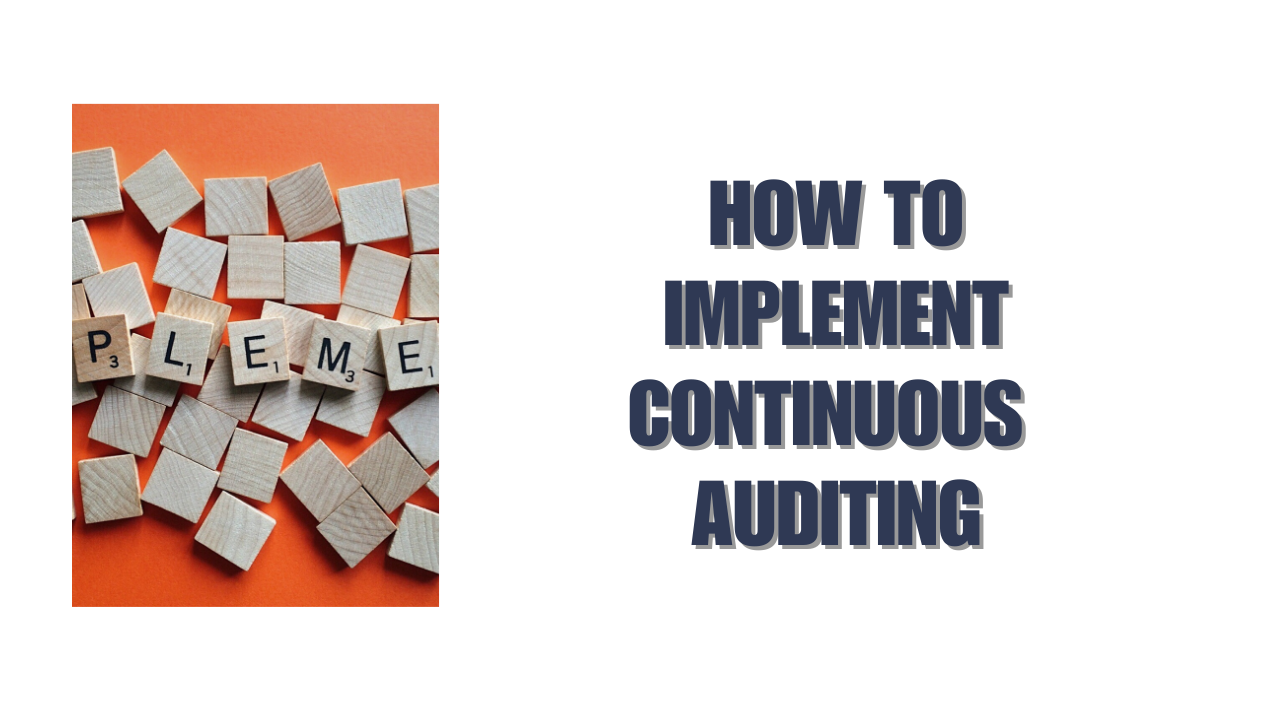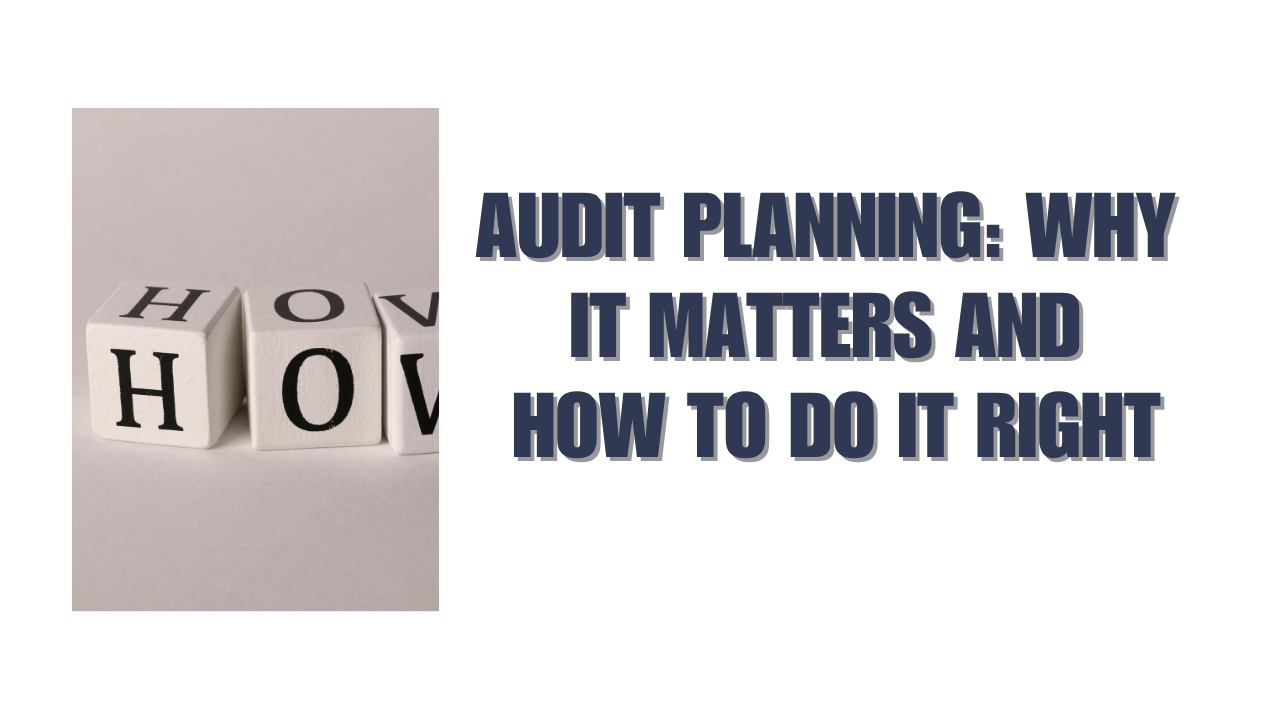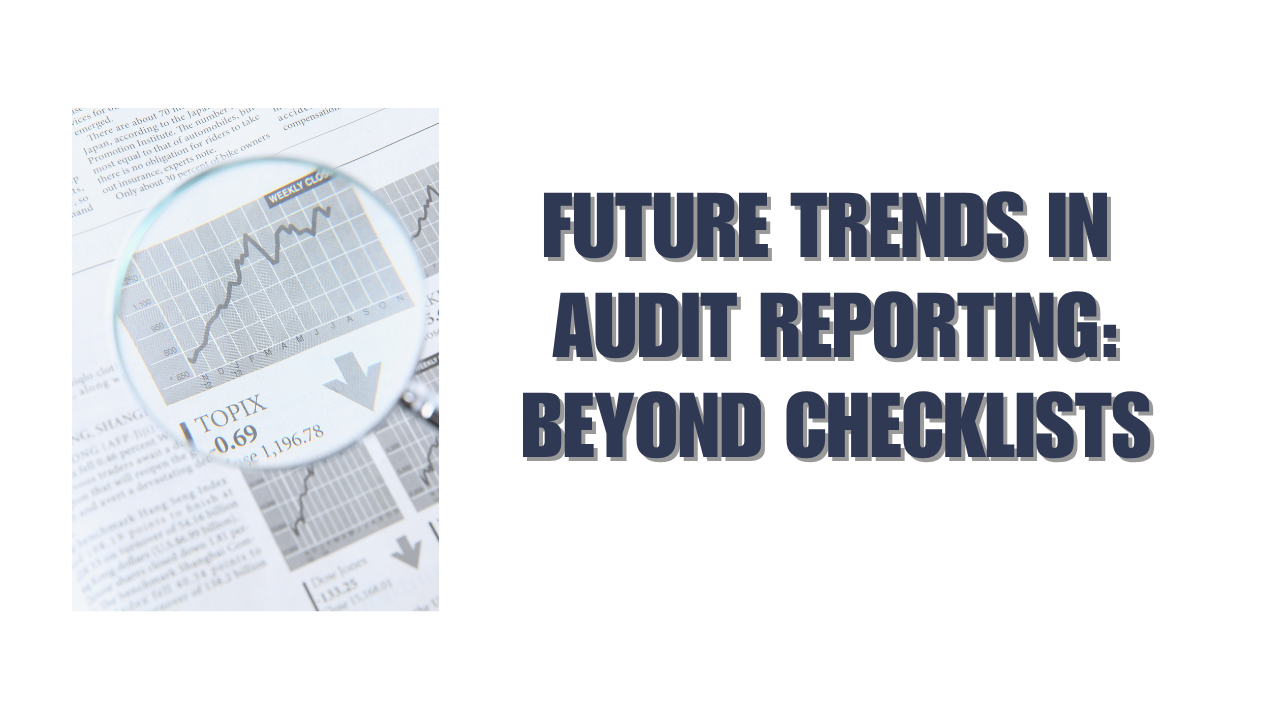Modern organizations can automate up to 60% of their auditing processes through continuous auditing implementation. Traditional periodic reviews have given way to immediate or near-immediate auditing that helps teams detect problems and maintain compliance continuously. Automated tools provide constant assurance of financial accuracy, which has become crucial for organizations dealing with complex business environments.
Continuous audit performs frequent or immediate assessment of an organization’s operations. The process moves away from periodic sample-based evaluations to ongoing assessments that use more data. Continuous auditing is different from continuous monitoring, though both help manage organizational risk. Time constraints and deadline pressures often plague traditional audits, but automated data collection and analysis minimize human error. This automation helps internal audit departments work more efficiently and develop deeper insights. This piece presents a proven framework that works to implement continuous auditing in today’s ever-changing business world.
What is Continuous Auditing and Why It Matters
Modern businesses need real-time analysis and proactive risk management to maintain financial integrity. Organizations have fundamentally changed their audit approach. They no longer rely on periodic reviews but embrace an “always-on” assessment process.
Definition of Continuous Auditing in Modern Context
A proactive, technology-driven process defines continuous auditing that blends into daily operations. Organizations now collect and analyze information in real-time instead of checking financial data at set intervals. This automated system helps perform control and risk assessments more often. It quickly identifies risks, compliance issues, and operational inefficiencies.
Continuous auditing works as an internal process that looks at accounting practices, risk controls, compliance, IT systems, and business procedures constantly. Technology powers this approach to automate error checking and data verification. The system triggers alarms when it spots anomalies.
Continuous Auditing vs Traditional Auditing
Traditional and continuous auditing have major differences. Traditional audits happen on a fixed schedule-usually yearly or quarterly. Auditors look at past financial data from specific periods. This old-school method relies heavily on manual work. Data collection and analysis take longer and face more errors because they depend on samples rather than complete data reviews.
Continuous auditing brings several benefits compared to traditional methods:
- Frequency and Timing: Results come instantly with continuous auditing. Traditional auditing looks back at what already happened.
- Scope and Coverage: The system checks all transactions and controls non-stop. Traditional sampling might miss problems.
- Technology Utilization: Automation reduces human error in continuous auditing. Traditional methods depend mostly on manual work.
- Response Time: Traditional audits react after problems occur. Continuous auditing spots issues right away through real-time detection.
Continuous Auditing vs Continuous Monitoring
Continuous auditing and monitoring serve different roles despite their similarities. Continuous auditing documents compliance activities. It shows regulators that organizations actively work to meet standards. Auditors lead this process to review finances more often and in detail.
Continuous monitoring takes a wider view. It tracks key performance indicators, business processes, and regulatory compliance across departments. Management gets quick updates on key metrics. This speed helps them handle risks and opportunities better.
Purpose and users create the key difference. Management uses continuous monitoring to catch unusual activities. Auditors use continuous auditing to document existing actions and controls. These approaches work together to improve oversight and decision-making. Organizations become more accountable and flexible as a result.
Both methods strengthen organizational risk management. A complete framework maintains financial integrity and operational efficiency throughout the year when properly implemented.
Step 1: Define Audit Objectives and Risk Indicators
A solid foundation of well-defined objectives and risk indicators will give a strong start to continuous auditing implementation. Your program’s tracking scope and purpose depend on this original phase, as continuous auditing needs precision and focus to work.
Aligning Audit Goals with Business Strategy
Your audit objectives must directly connect with your organization’s strategic priorities to maximize continuous auditing value. Research suggests only 39% of internal audit respondents currently base their audit plans on strategic business risks. However, more than half expect this influence to grow over the next few years. This strategic lineup will help target audit resources where they can best affect organizational success.
Your continuous audit program should answer these fundamental questions:
- What specific risks threaten strategic business objectives?
- Which processes need ongoing monitoring to maintain operational integrity?
- How will continuous auditing support overall governance and risk management?
The core team’s involvement becomes vital at this stage. Senior management and board members who participate in setting objectives help secure buy-in and make sure audit activities support strategic goals. This shared approach also helps auditors learn about business operations and potential risk areas.
Identifying Key Risk Indicators (KRIs)
Key Risk Indicators serve as the “risk radar” for your continuous auditing program and provide early warning signals before problems affect operations or financial results. KRIs look forward instead of backward and predict emerging threats, which allows preemptive action.
Your KRIs should:
- Connect directly to strategic objectives
- Provide practical early warning data
- Have clear thresholds that show when risks become unacceptable
- Maintain consistent and reliable measurements
Management collaboration helps set appropriate risk thresholds based on the organization’s risk appetite. Automated alerts can notify the audit team when indicators exceed preset limits and prompt investigation or immediate action.
Setting SMART KPIs for Audit Success
Key Performance Indicators measure audit effectiveness and efficiency while KRIs focus on risk. Audit KPIs should follow the SMART framework-Specific, Measurable, Achievable, Relevant, and Time-bound to maximize their impact.
Clear definitions of expected results make KPIs specific. Quantity, cost, or quality metrics enable objective assessment. Goals should challenge the audit team without becoming unrealistic. KPIs must line up with the audit function’s scope and influence. Time parameters establish clear deadlines or frequencies (daily, monthly, quarterly).
Performance metrics help showcase continuous auditing activities’ effectiveness to audit committees and senior management. These metrics prove that audit activities support strategic business objectives and position the audit function as a value-adding partner rather than just a compliance requirement.
Start with a focused set of metrics instead of tracking too many indicators. Your measurement framework can expand as your continuous auditing program matures, based on experience and changing business needs.
Step 2: Assess Current Audit Capabilities and Gaps
You need a full picture of your organization’s audit capabilities to identify gaps that might affect effectiveness before you implement continuous auditing technologies. This step shows where you stand and what improvements you need.
Evaluating Existing Audit Tools and Processes
Start with a complete review of your audit framework and see how it matches with ISO 31000 standards. Then check if your current tools give you good decision-making procedures for strategy, operations, and compliance activities.
A skills assessment at this stage helps understand your audit team’s capabilities. Note that good evaluation doesn’t just check if controls exist – it must show whether these controls actually work.
Here are the key factors to look at during evaluation:
- How well tools integrate with your organization’s strategic objectives
- Quality and easy access to audit process documents
- Up-to-the-minute data analysis features
- Knowing how to adapt to new risks
Identifying Manual Bottlenecks and Data Silos
Data silos are the biggest problem in continuous auditing. Research shows companies with scattered risk management data face security breaches more often. 61% of companies with “ad-hoc” risk management and 46% of those managing risk in separate departments had breaches. This number drops to 30% for companies that use integrated approaches and automated tools.
The core team spends limited time with their repetitive administrative tasks. These delays often come from data stuck in systems that don’t talk to each other, like MES, LIMS, ERP, and older platforms.
Manual bottlenecks usually come from:
- Limited resources and uneven workloads
- Time-consuming data entry and checks
- Poor process visibility between departments
- Unclear roles in audit phases
Mapping Audit Scope to Risk Areas
After finding your capabilities and bottlenecks, map your audit scope to specific risk areas. This needs a risk identification exercise in all departments.
Risk categories should include financial risks (liquidity, interest rates), operational risks (data processing errors, system failures), compliance risks (regulatory violations), strategic risks (brand damage), and cybersecurity risks (data breaches). Calculate a risk score for each category by multiplying likelihood by impact to set your priorities.
The mapping process should involve stakeholders early and have a clear audit plan with objectives, timeline, and resources. Your plan should stay flexible as new information comes up during assessment.
A solid foundation for continuous auditing comes from evaluating current capabilities, finding bottlenecks, and mapping risk areas. This helps address your organization’s specific needs and weak points effectively.
Step 3: Select and Integrate the Right Technologies
The success of continuous auditing depends on choosing the right technology solutions. Technology helps organizations move from manual audits to automated, live assessment processes that provide quick insights and boost risk management.
Automation Tools for Live Data Analysis
Automation transforms auditing by bringing financial data to a central location. It automates evidence collection and creates reports with minimal human input. Audit professionals save time because they no longer need to spend up to 38% of their time on repetitive administrative work. The benefits of automation include:
- Better quality through standardized processes that minimize human errors
- Better coverage by testing complete data sets instead of samples
- More frequent testing that enables continuous auditing
Integration with ERP and Accounting Systems
Direct integration with Enterprise Resource Planning (ERP) systems and accounting platforms makes continuous auditing work. This connection creates a reliable source of truth through automated data extraction and analysis. Audit teams can automatically collect documentation of business processes, transactions, and controls through ERP integration. This provides continuous assurance and helps teams take corrective action faster.
Cloud-Based Platforms and RPA in Auditing
Cloud-based platforms have changed how audit teams work together. These platforms provide centralized solutions that enable live updates and smooth data sharing. Teams can access and analyze information from anywhere, making data more available and expandable.
Robotic Process Automation (RPA) handles routine audit tasks like reconciliations, internal control testing, and detail testing. RPA works at the user interface level and copies human actions such as queries, cut/paste operations, and button clicks without affecting the IT infrastructure. This lets auditors concentrate on tasks that need professional judgment.
AI and Machine Learning for Anomaly Detection
Artificial intelligence and machine learning represent state-of-the-art audit technology with unique capabilities for finding anomalies. AI systems can analyze large datasets faster and spot inconsistencies and potential issues that humans might miss.
Machine learning algorithms learn to identify suspicious transaction patterns and detect unusual payment volumes or transfers between related parties. A case study showed that an AI solution successfully identified fraudulent journal entries that were predetermined in testing, proving its effectiveness in ground scenarios.
AI systems improve risk assessment by analyzing past data and external factors. This helps identify high-risk areas and distribute audit resources effectively. Evidence-based approaches improve audit quality and lower the chances of audit failures.
Step 4: Build, Train, and Pilot the Audit Program
The next phase of continuous auditing implementation comes after technology selection. Organizations must build, train and pilot the program in a controlled setting. This practical application brings theoretical plans to life.
Creating a Pilot Program for High-Risk Areas
Pilot testing is advisable before rolling out continuous auditing across the organization. Organizations should avoid the “big bang” approach. Starting small with specific high-risk areas helps assess effectiveness and spot potential issues before wider implementation.
Training Audit Teams on New Tools
Audit teams need the right skills to make continuous auditing work. Traditional auditing continues to move toward automated technology-based methods. The detailed training should cover:
- Workshops and demonstrations that provide hands-on practice with new tools
- Resource centers with tutorials and troubleshooting guides
- Technical skill development to understand AI/ML models
Change Management and Stakeholder Buy-In
Leadership support plays a crucial role in successful implementation. Clear communication about benefits and early stakeholder involvement reduces resistance. A dedicated change management team can guide the transition and provide ongoing support.
Feedback Loops for Continuous Improvement
Well-designed feedback systems turn audits from reactive checklists into tools for strategic growth. Teams can capture valuable insights during evidence collection, control testing and after audit completion. Organizations create transparency by establishing repeatable processes. This eliminates confusion from scattered emails and multiple document versions.
Conclusion
Modern organizations are moving away from periodic reviews to automated, up-to-the-minute auditing that changes how they handle risk and compliance. This article shows you a tested framework that works to implement continuous auditing in your company.
Your first step is to set clear audit goals that match your business strategy and pick warning signals as risk indicators. A full assessment of your current capabilities will help you spot any roadblocks that could slow down implementation.
The right technology choices are the foundations of continuous auditing that works. Your transition from manual to real-time assessment needs automation tools, ERP integration, cloud platforms, and AI-powered anomaly detection. The core team needs proper training, and a focused pilot program will ensure smooth adoption before you expand it company-wide.
This approach brings clear advantages. You can act on problems right away instead of finding them months later in traditional audits. Automation cuts down human error and lets you check all data instead of just samples. Your audit team can focus on strategy and value-adding work instead of repetitive tasks.
While setting this up needs careful planning and resources, it leads to better financial accuracy, tighter compliance, and faster risk management. Companies using continuous auditing make better decisions based on current data rather than old reports.
Business complexity keeps growing. Continuous auditing gives you the alertness and quick response needed to guide your company confidently through uncertainty. This framework gives you a clear path to turn your audit function from regular checkpoints into an always-on strategic tool.
FAQs
Q1. What are the key steps to implement continuous auditing?
To implement continuous auditing, start by defining clear audit objectives aligned with business strategy. Then, assess current capabilities, select appropriate technologies for automation and real-time analysis, and create a pilot program for high-risk areas. Finally, train your audit team on new tools and establish feedback loops for continuous improvement.
Q2. How does continuous auditing differ from traditional auditing?
Continuous auditing operates in real-time or near real-time, providing ongoing assessment of an organization’s operations. Unlike traditional periodic audits, it uses automated tools to analyze larger data sets, detect issues immediately, and enable quicker responses to potential risks or compliance issues.
Q3. What technologies are essential for effective continuous auditing?
Key technologies for continuous auditing include automation tools for real-time data analysis, integration with ERP and accounting systems, cloud-based platforms for collaboration, and AI/machine learning for anomaly detection. These technologies enable efficient data processing, risk assessment, and timely insights.
Q4. How can organizations ensure successful adoption of continuous auditing?
Successful adoption of continuous auditing requires clear communication of benefits, early stakeholder engagement, and comprehensive training for audit teams. Start with a pilot program in high-risk areas, establish change management processes, and create feedback mechanisms for continuous improvement to ensure smooth implementation.






